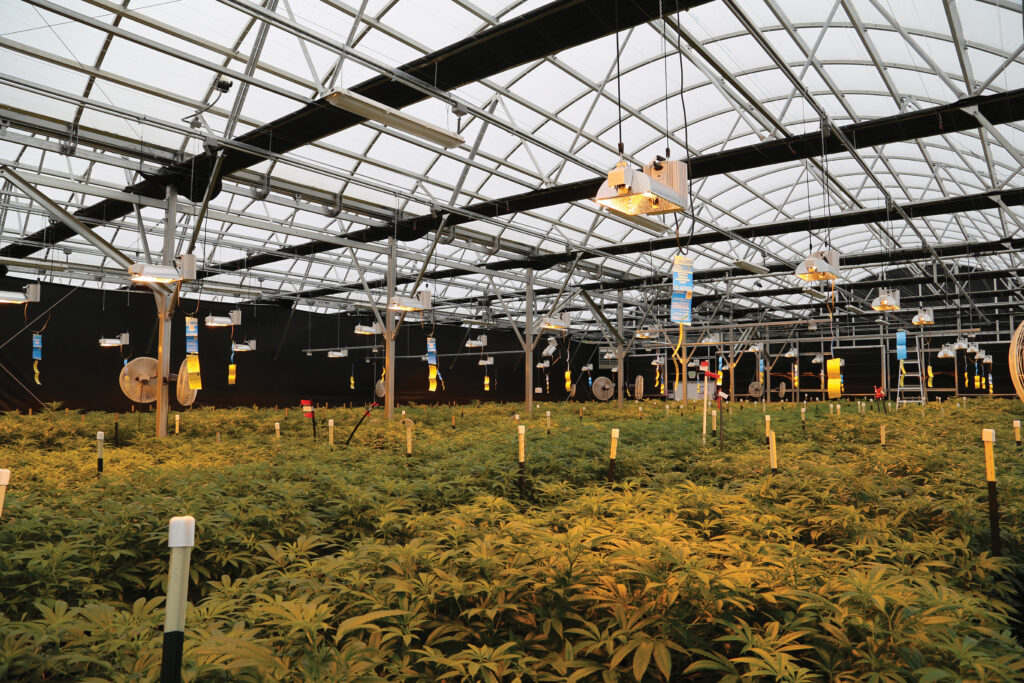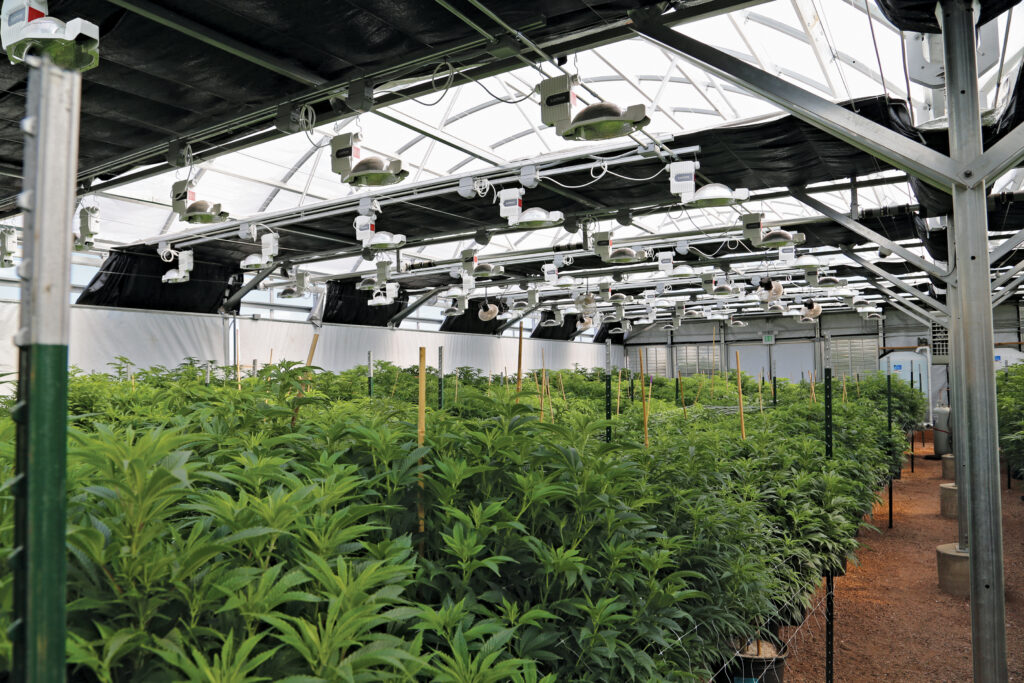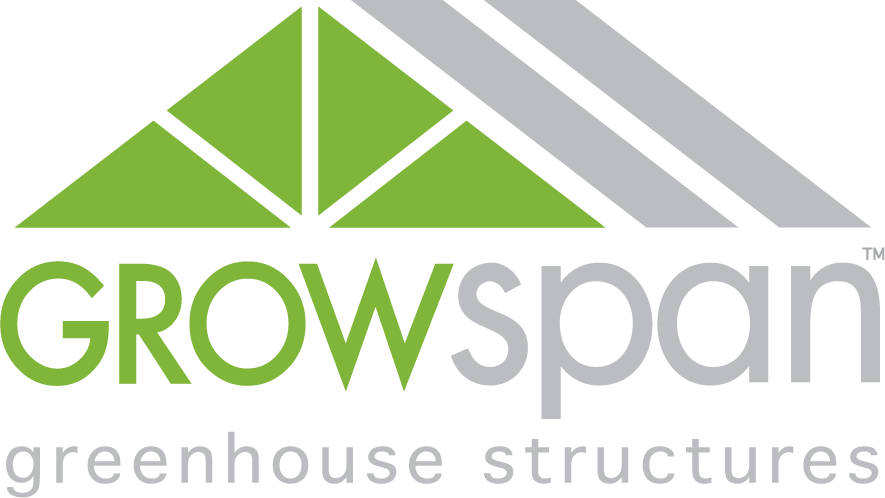Creating the Ultimate Cannabis Greenhouse Environment
Throughout the history of cannabis production, growing outdoors or utilizing an indoor grow room has been commonplace. As the cannabis industry continues to boom, growers are discovering that the greenhouse is the ultimate combination of both.
GrowSpan has been building greenhouse structures for over 40 years, offering the very best in structural durability, engineering specifications and construction methods. Along with a breadth of knowledge in the design process, GrowSpan’s Greenhouse Specialists can erase any doubt that growers had about a greenhouse’s capability in the cannabis industry.
To create industry-leading cannabis greenhouses, GrowSpan focuses on five key environmental factors that affect high-quality crop growth. These structures also employ innovative designs and extensive customization that will make growers wonder why they ever avoided greenhouse cannabis production.
Can you grow cannabis in a greenhouse?
While cannabis comes from a background of secrecy and private growing, the industry’s development has revealed the answer to this question: a resounding yes. Advancements in technology and growers’ knowledge of how cannabis develops has allowed greenhouses to become not just an alternative, but rather a superior setting for growing cannabis. Greenhouses harness natural light from the sun, while providing the precision control that indoor growers are accustomed to. By providing similar end results to indoor-grown cannabis, along with significant energy savings, greenhouses can offer operations a greater method for their cannabis production.

TEMPERATURE
Overall temperature is a huge aspect of controlling the environment in a greenhouse, and a contributing factor to maintain an ideal temperature is the overall size, shape and location of the structure itself.
One of the more popular cannabis models, the GrowSpan Series 500 Greenhouse, comes with a double layer of 6 mil greenhouse film, and this structure offers exceptional heat retention and light transmission. Ideal temperature inside the structure ranges, and in the daytime, it is between 68 and 78 degrees Fahrenheit, while at night it is 58 and 68 degrees Fahrenheit.
Like many of the other environmental factors that will be discussed, growers will want to monitor their temperature with a greenhouse controller. These controllers are easy to use and make monitoring heating, cooling, humidity, lighting, irrigation and more simple.
Humidity
Evaporative cooling systems are the most cost-effective way to maintain an environment that cannabis plants can thrive in and something growers will definitely want to consider. They relieve heat stress, are just as effective as traditional AC systems and cost 50% less than traditional AC systems. These systems not only cool, but also moisturize the air, so plants don’t need to be watered as often.
These systems work by drawing air, which is cooled through the evaporation of water, from across the growing area. An evaporative cooling pad is installed on one end of the greenhouse and exhaust fans are installed on the other end. The exhaust fans pull air through the evaporative cooling pad. The air is cooled as it passes through the pad. The air is then drawn across the greenhouse, cooling the growing area. For smaller areas, there are through-wall and mobile coolers available.
For operations located in climates with high humidity, growers will instead need a sufficient combination of both active and passive ventilation. Adequate ventilation and air circulation helps growers avoid stagnant air and keeps plant conditions uniform, while still fighting higher temperatures. If some plants are thriving and others are debilitated by resting humidity, cannabis quality will be inconsistent, and entire harvests can be susceptible to disease.
AIR QUALITY
Our GrowSpan Series 500 Greenhouses are designed to have more overhead space by featuring high sidewalls, which allow for better ventilation. Another bonus of these high sidewalls is the ability to grow large crops and maximize all the greenhouse space efficiently. Knowing the air volume of the structure is also key in properly heating and cooling the structure. Knowing this will help growers determine the cubic foot per minute (CFM) requirements when selecting the proper fans and shutters.
SUPPLEMENTAL LIGHTING
The vegetative room or section of a greenhouse takes advantage of the natural sunlight during the daytime hours of operation. This is one of the major benefits of a controlled environment, as it helps to dramatically cut down on power usage and utility costs.
However, there are times when growers will want to use less intense forms of artificial lighting, like metal halide or florescent fixtures. This could either be times where longer photoperiods are needed for a seedling or clone, or to provide longer light cycles for transplants or plants not ready for the flowering stage. The right amount of supplemental lighting can provide a significant boost to cannabis crop growth in a greenhouse.

LIGHT DEPRIVATION
Light deprivation, also referred to as blackout or light dep, is a term used for the practice of reducing the light cycle of plants in the flowering stage. This is crucial for cannabis growers, so their plants don’t revert back to a vegetative state of growth, which is a common issue with outdoor plants. The grower usually limits light to 12 hours or less.
It is important that growers’ structures are designed to fully blackout any light. An automated light deprivation system gives operations complete control over plant growth and will minimize labor costs as well.
There are many more factors that go into growing the ideal harvest, but the basics of the structure should be designed to address many of the above environmental factors. This will allow growers to completely control their structure’s environment and promote consistent, sustained success.
To start designing your own cannabis greenhouse, call or REQUEST A QUOTE today.

